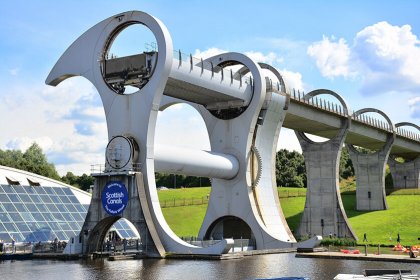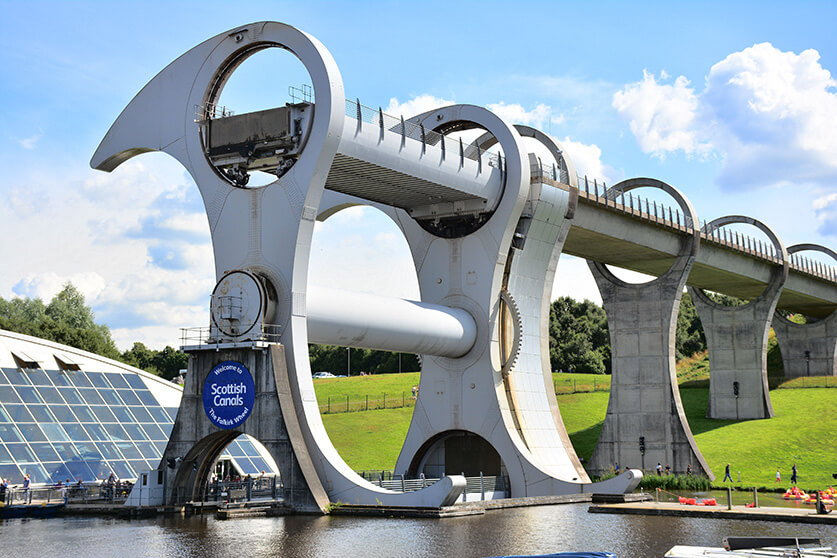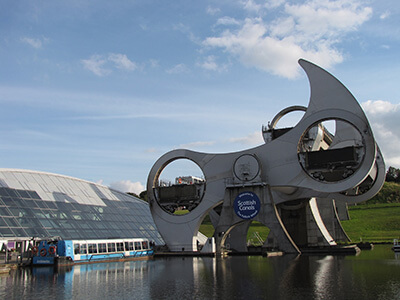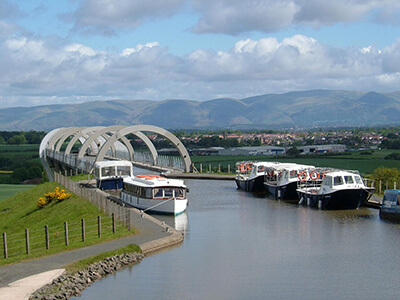

How do you connect two waterways when one is over 100 feet below the other? If you’re Scotland, you build an aqueduct with a rotating arm!
Called “a form of contemporary sculpture” by the Royal Fine Art Commission for Scotland, the unique Falkirk Wheel blends design with functionality and is the first, and so far only, of its kind in the world.

Each year over 500,000 visitors come to take a look. Before the Wheel, to cross the waterways you had to traverse a series of 11 canals which took nearly a day! This had been a persistent issue for almost 100 years.
Design inspiration is said to have come from a Celtic double-headed spear, a ship’s propeller, a whale’s ribcage, and a fish’s spine. Architect Tony Kettle brought the vision to life.
The Wheel contains 2 parts, one on top and one on the bottom. It’s controlled by operators who closely monitor the water levels and mechanisms. When ready, a series of safety locks are released and the Wheel turns, allowing the arms, and boats, to switch positions.

Amazingly, either part of the wheel can operate without a ship inside. This is possible because boats displace their weight in water so the only important factor is that the water levels are the same. Each arm holds over 130,000 gallons of water, enough to fill an Olympic size swimming pool.
The other startling feature is that the Falkirk Wheel only requires 1.5kWh of energy to turn. That’s the same amount required to boil 8 standard size tea kettles.
Not only did the Falkirk Wheel solve a nearly century-old problem, but did it with style and created a new tourist destination. Hopefully, other architectural and engineering problems can be approached in the same way.




Wow, impressive. Enjoy looking at these crazy buildings. Thanks for sharing and keep ’em coming!
Thanks, Brian! Will do.